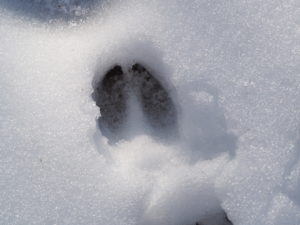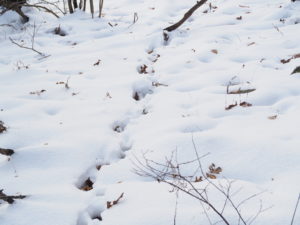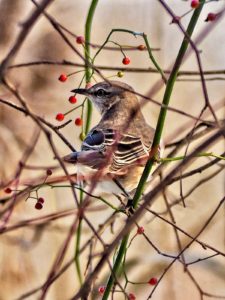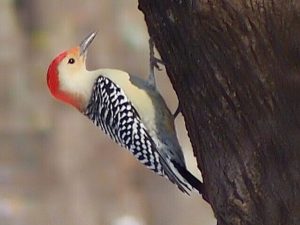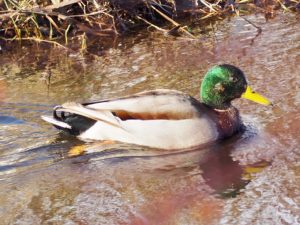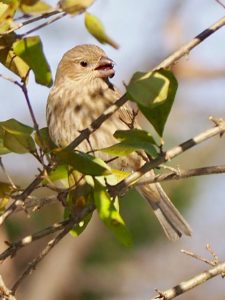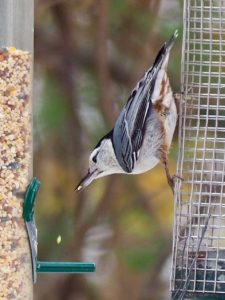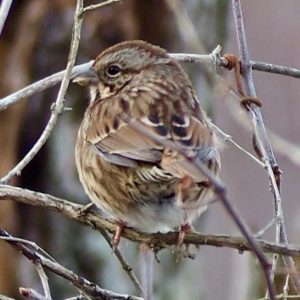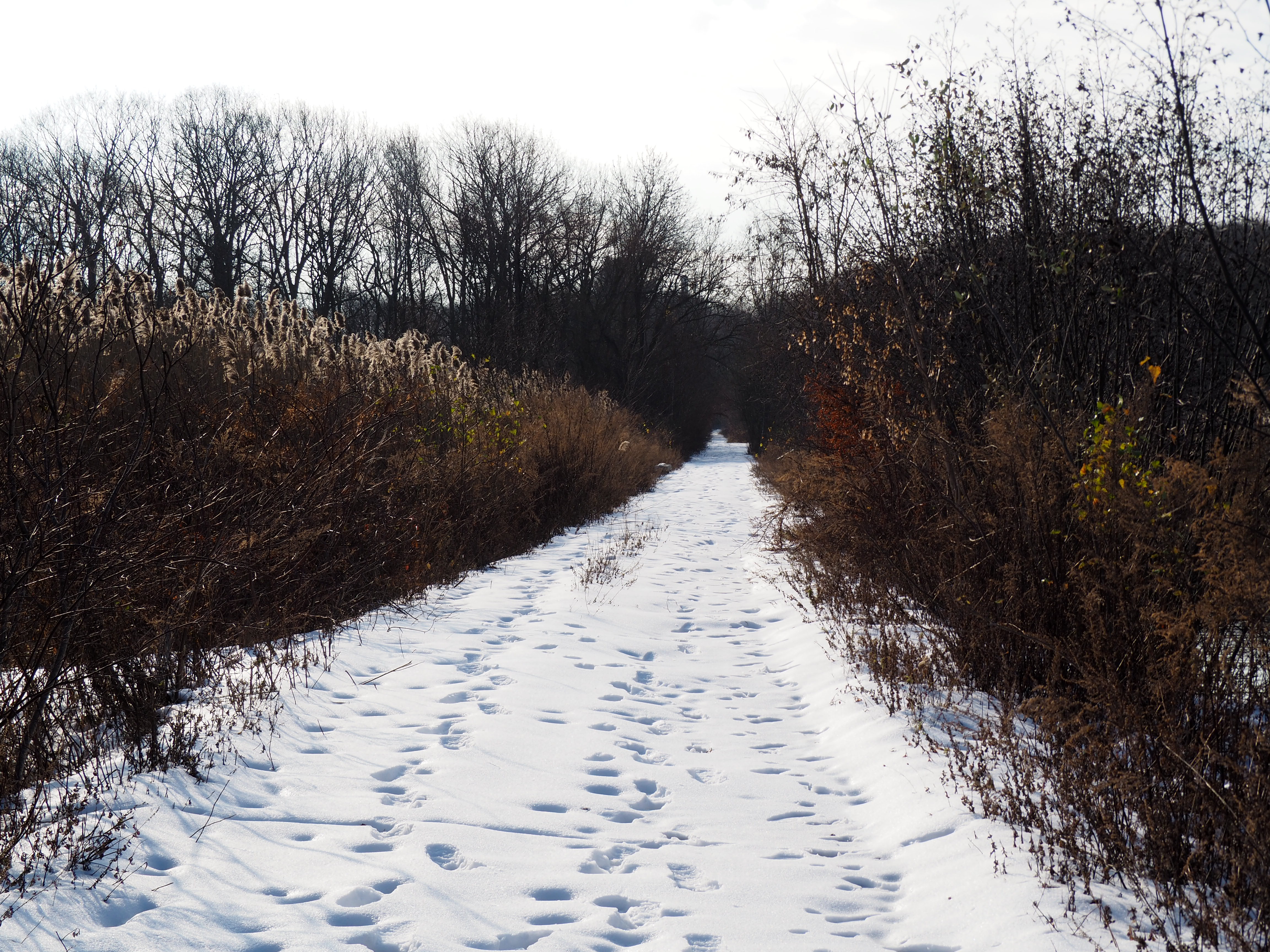
Opening of Troiano Trail showing hikers and dog tracks. This trail has phragmites on the left with Summacs and other native vegetation on the right. This trail is covered in gravel placed by Mass Audubon to allow persons with physical disabilities to come through as apart of their sensory trail.
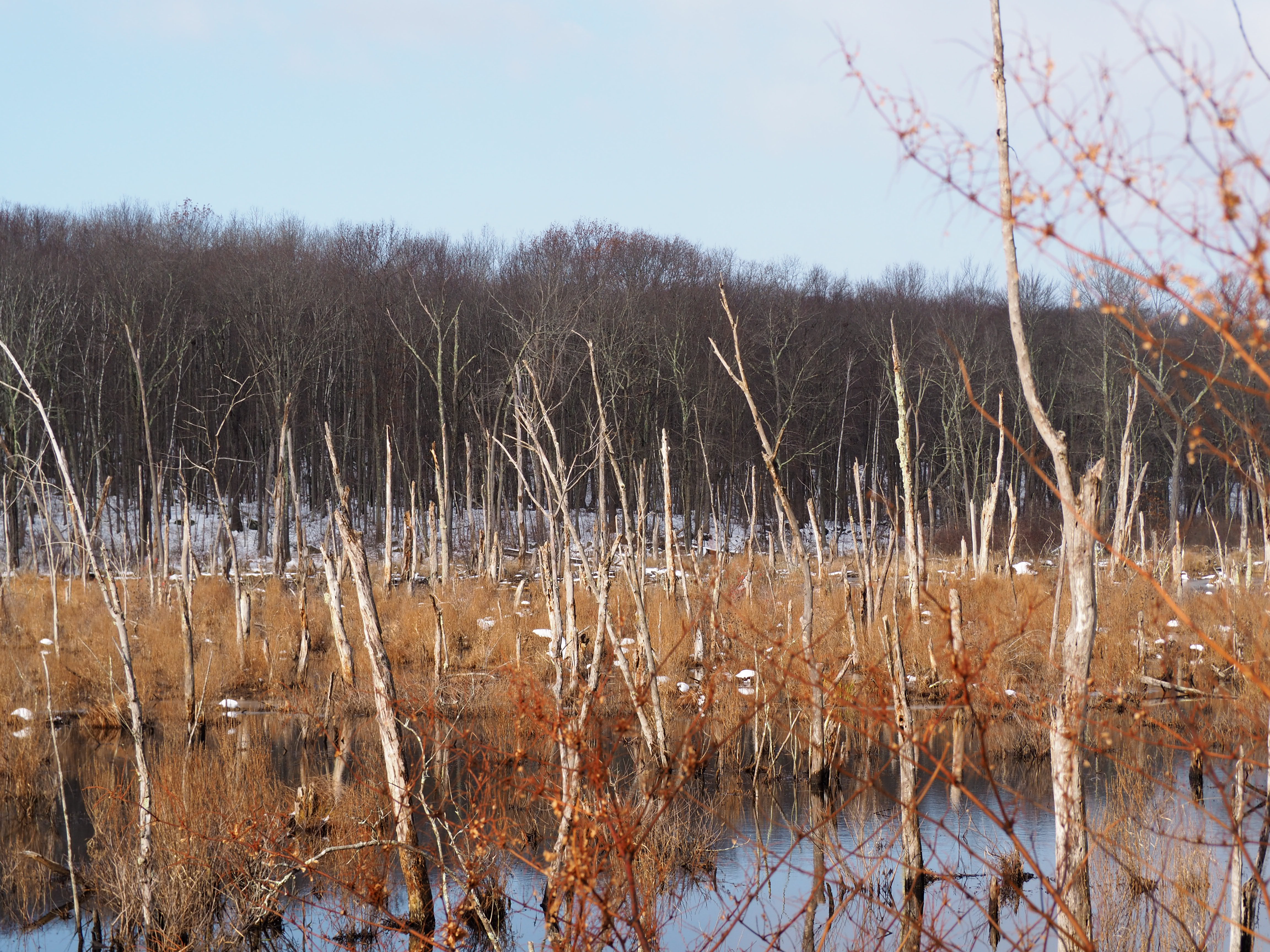
Snags and phragmites in Broad Meadow Brook. This once flooded forrest provides habitat for wetland organisms such as sparrows, dragonflies, and frogs during the summer months. Now it serves a breeding area for water fowl such as mallards and wood ducks.
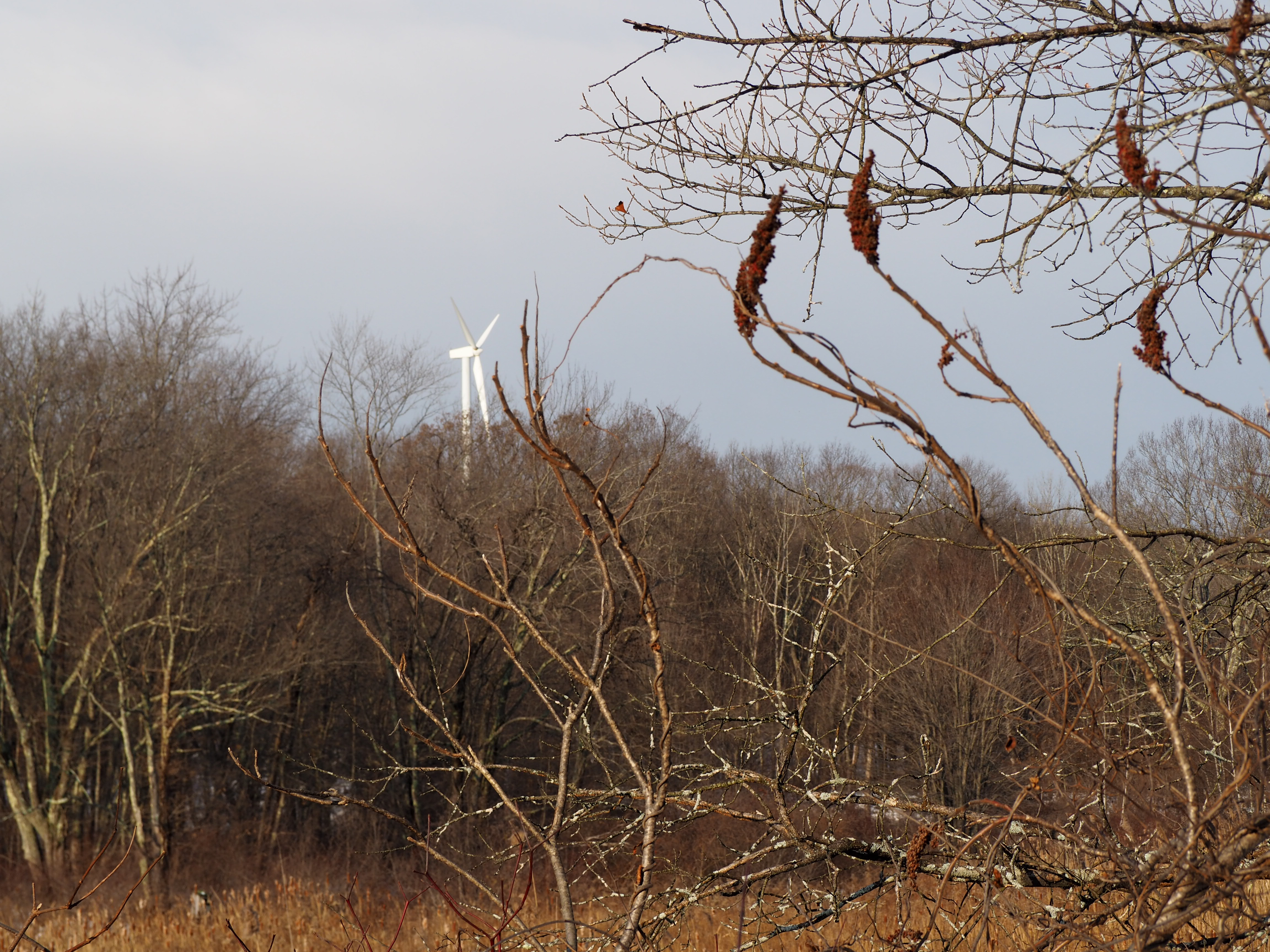
Staghorn sumac nearby Holy Name High School’s Wind Turbine. This nearby catholic school uses wind to store as electrical energy that runs the school completely and even is sold to the city of Worcester and underdeveloped areas.
For my new phenology spot, I chose Troiano trail at Broad Meadow Brook, a Mass Audubon Sanctuary. Broad Meadow Brook is a tributary that belongs to the Black Stone River watershed. Despite being in the urban metropolis of Worcester, MA it is a 400 acre wildlife sanctuary. Founded on Nashoba formation consisting of schist and gneiss bedrock formed during the Ordovician 485 million years ago now is home a thriving mix of forests, meadows, and wetlands. The area I was looking at was on Troiano which is a modified wetland with Broad Meadow Brook running through. This slow-moving stream promotes the growth of phragmites, sumacs, red and sugar maples, and a variety of different fern species. During the spring and summer months this is breeding grounds for bullfrogs, green frogs, northern water snakes, painted turtles, red-winged black birds, great-blue herons, beavers, muskrats, and more. This past summer I worked there as a camp consular working with kids ages five to twelve. This was a great experience working as an environmental educator. In the past, I have worked in labs and facilities dedicated to wildlife, yet at Broad Meadow Brook that was the first time I use my knowledge and work outside. During the summer we caught frogs, built boats, catches dragonflies, learn how to use binoculars to watch birds, and hopefully appreciate nature. I love the joy of seeing the faces of my campers glow in excitement, just as I was at their age about nature. As much as they learned from me my time at Broad Meadow Brook challenged me to learn more. Going through their extensive library and working outside I had the chance to learn more about New England Wildlife and become a better educator. Similar to my current phenology spot in Centennial Woods in Burlington it has challenged me to learn more such as tree species, bird calls, and history. Taking NR 1 has enriched me in the local natural and social histories of Burlington and has made me have a deeper connection with the area. I hope to have this same relationship with Broad Meadow Brook learning more about its social histories. Broad Meadow Brook has helped me foster being an educator and a student and I hope to deepen my connection to this place by learning more both its natural and social histories.
https://www.google.com/maps/d/edit?mid=1lX_71rtaxYG3_I-kp0-QfR9RzEBgpZCE&ll=42.238854895077374%2C-71.77416200000005&z=17
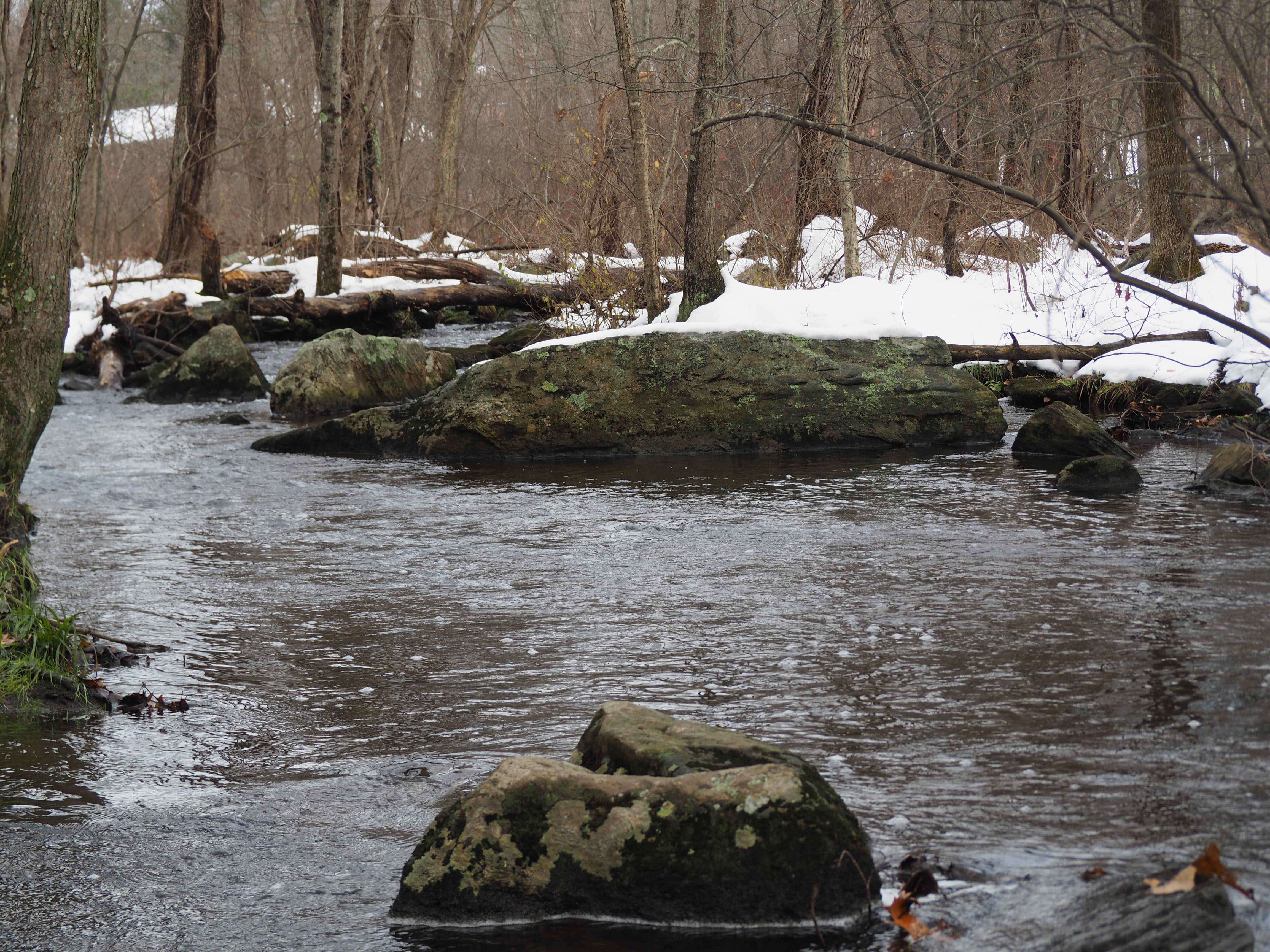
Elevated water level from melted snow. During the summer it was shallow allowing for crayfish, water striders, and other macro-invertebrates. In human use this brook was used for racing paper boats and crayfish catching.

The barrier on storm drain prevents active beavers from blocking incoming water. In the past beavers have blocked storm drains causing nearby Worcester streets to be overflowing with water. This barrier allows these beavers to continue to practice building dams, while allowing storm water to pass to be later treated.

End of Broad Meadow Brook that enters water treatment center located in the top left. This was a forested area taken over by flooding waters making this a wetland. This can be seen by the standing stags and grasses. Now it is occupied by wetland species such as mallards that can be found in this photo (look hard)!
Knowing that my current phenology spot has Centennial brook running through it I chose Troiano trail for it has Broad Meadow Brook running alongside the trail. Both being spots influenced by brooks these phenology spots have similarities and differences. Both Centennial brook Broad Meadow Brook are both tributaries located in urban areas (Burlington, VT and Worcester, MA). Both these brooks flow into larger water bodies where Centennial Brook runs into the Winooski River then into Lake Champlain and Broad Meadow Brook running into the Black Stone River then into the Atlantic Ocean. Originally both these lands were farmlands with Broad Meadow Brook being held by the Holdregde Family with Centennial Brook being used as fields for grazing sheep. Eventually, both these lands would be protected as wildlife sanctuaries under the institutions of Mass Audubon and UVM. Today they both makeup deciduous forests and riparian areas for research and education, yet differ in ecological status. Broad Meadow Brook has higher stream diversity in macro-invertebrates, fish, and etc. and reportedly better water quality than Centennial Brook. They do both have problems with excess amounts of phosphorous from runoff, yet Broad Meadow Brook has more biological diversity in terms of macro-invertebrates. In addition, the differences in forrest composition where Centennial Brook has more conifers such as eastern white pine and eastern hemlock than Broad Meadow Brook. This can be mostly explained due to human influence making Centennial Brook a more disturbed area than Broad Meadow Brook. Therefore, both these urban-based brooks are similar in land history and composition, yet differ in ecological status.
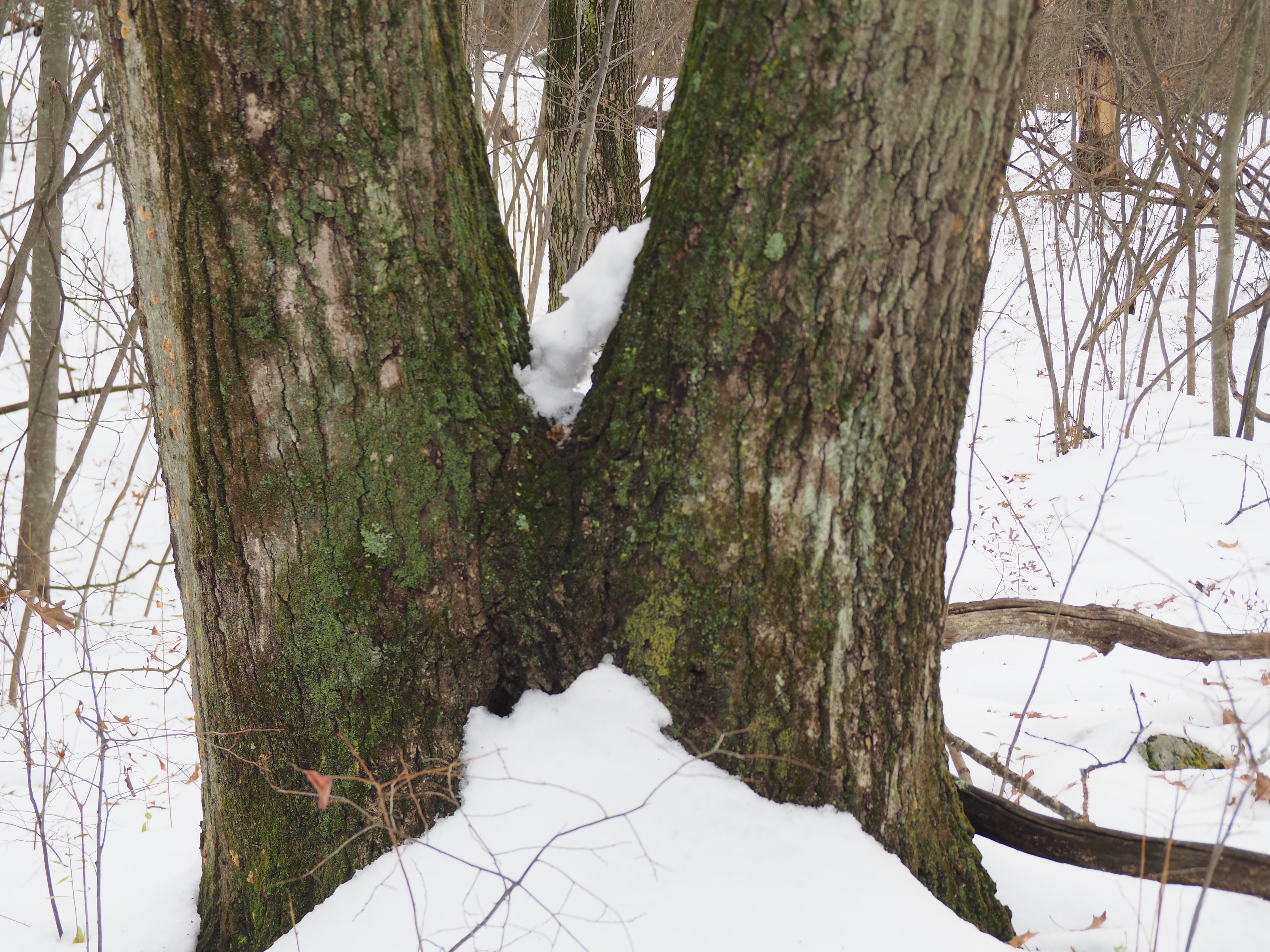
This tree has coppice in that it was once cut down for farming then regrew having two trunks.
http://blackstoneriver.org/blackstone/wpcontent/uploads/2010/02/Report_2005_Water_Quality_Monitoring_Report_Card.pdf
Saw a pacing set of deer tracks and I decided to follow them off the trail for two-hundred yards. Following the tracks, I came across two does (female deer) in the underbrush. One looked back at me, while the other one continued to eat debris on the forest ground.
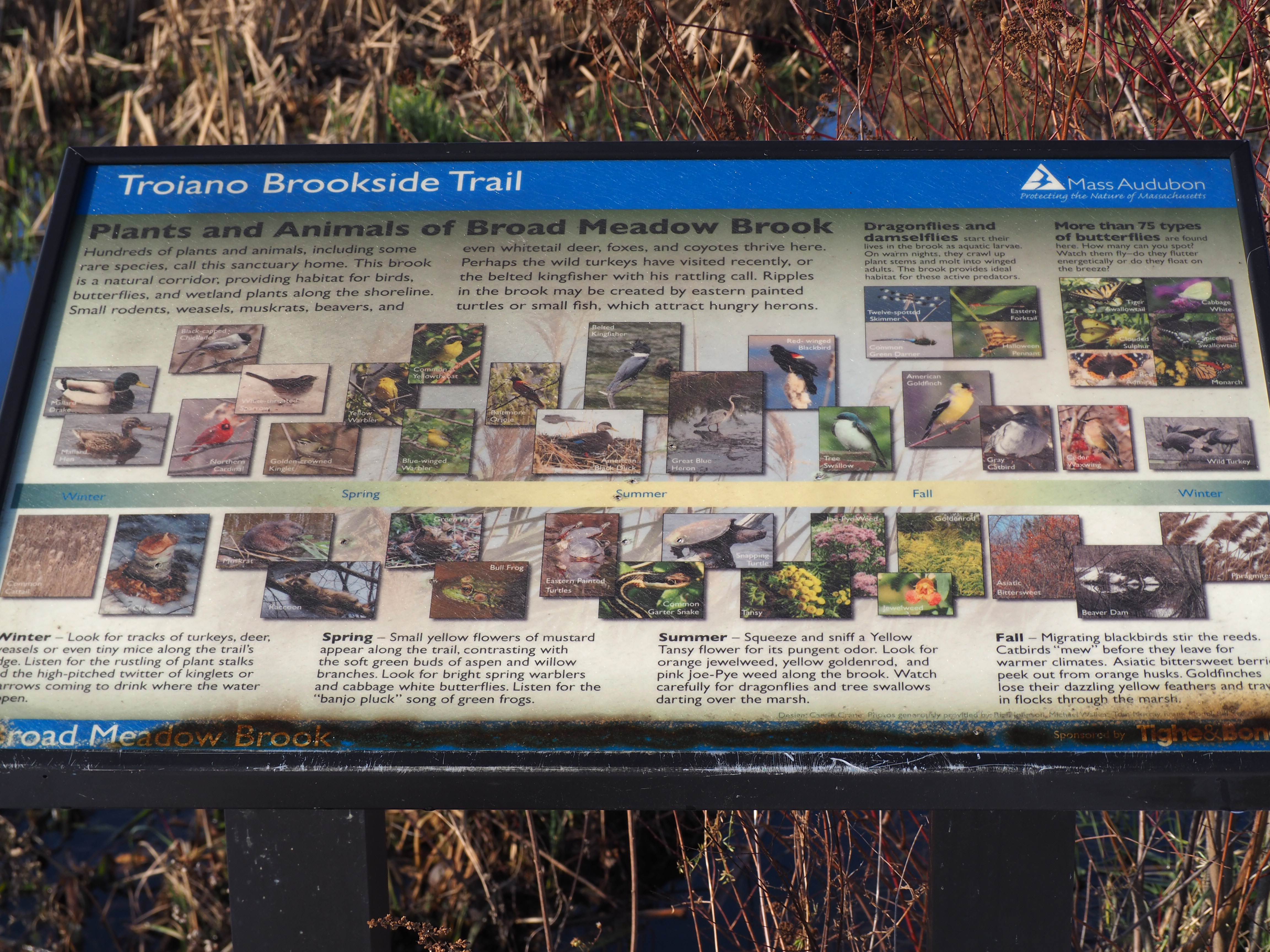
I guess I’m not the only one interested in the phenology of Troiano trail! Notable mentions of winter are breeding mallards and dark-eyed juncos. From being here over the summer I saw many species listed such as snapping turtles and red-winged blackbirds
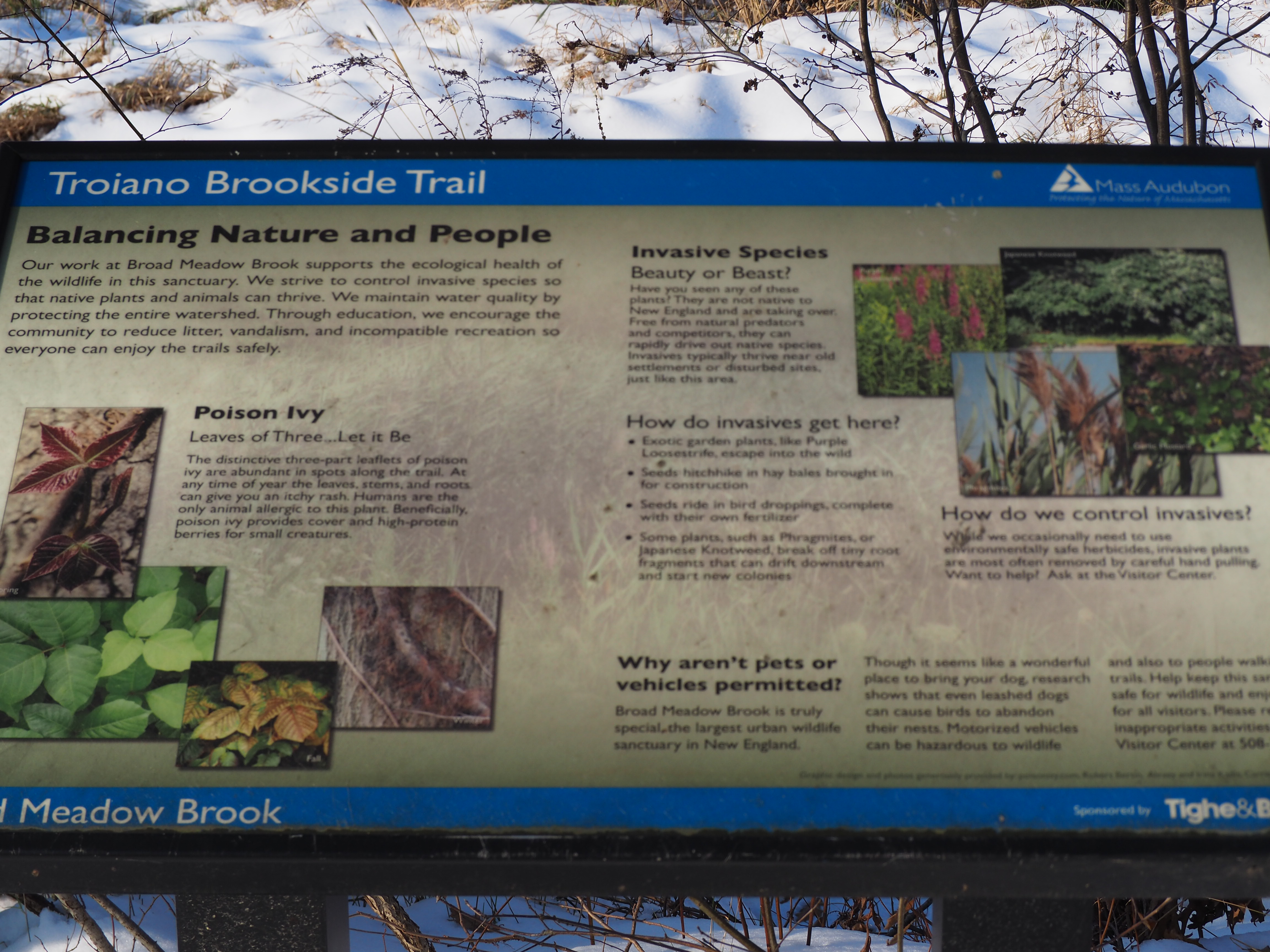
This sign educates the public on invasive species also found in Burlington such as phragmites. One major invasive not mentioned is Japanese Knotweed.
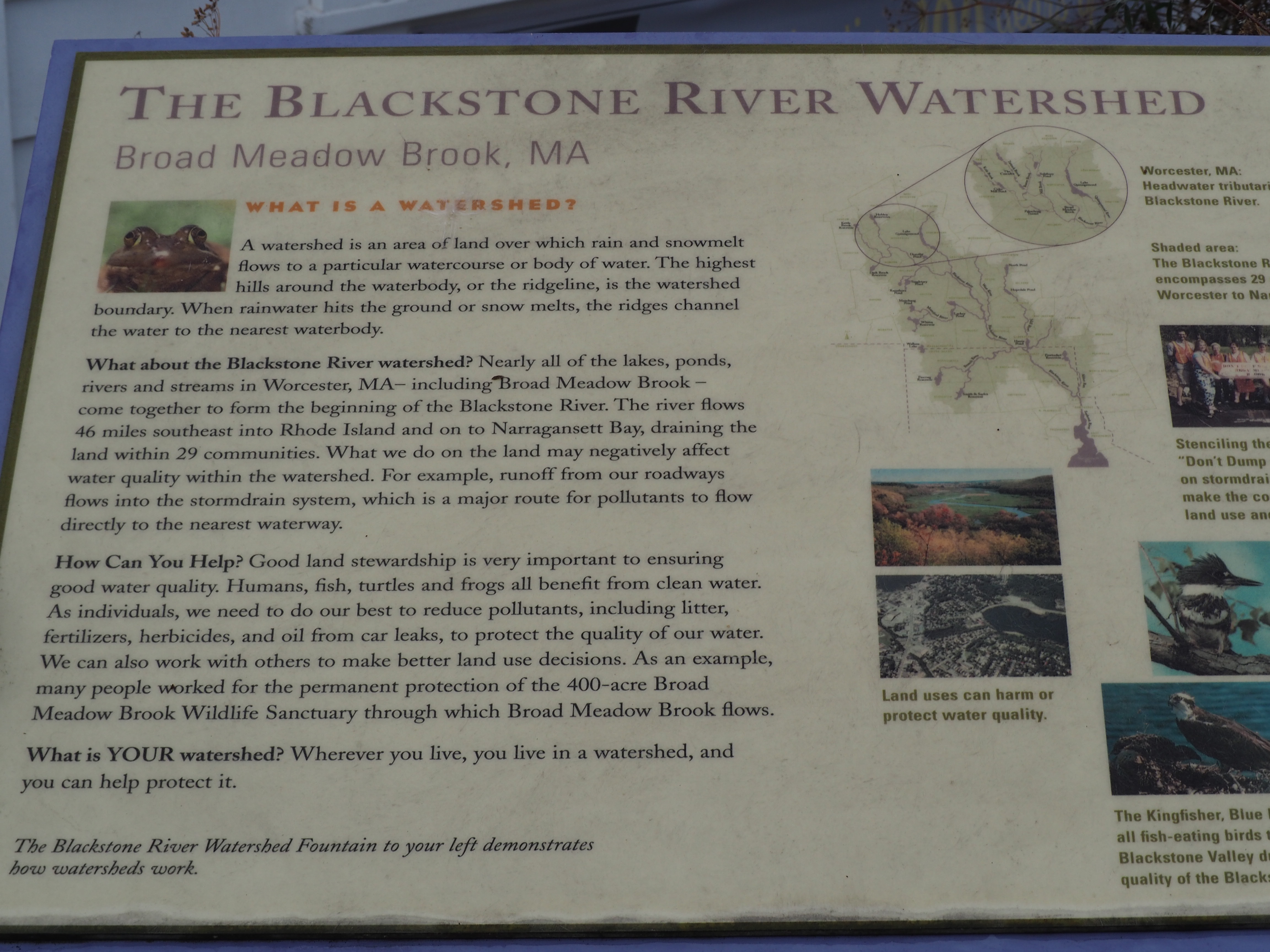
This sign educates visitors about the local Blackstone River Watershed that Broad Meadow Brook feeds into. It shows the natural and historical significance of the watershed
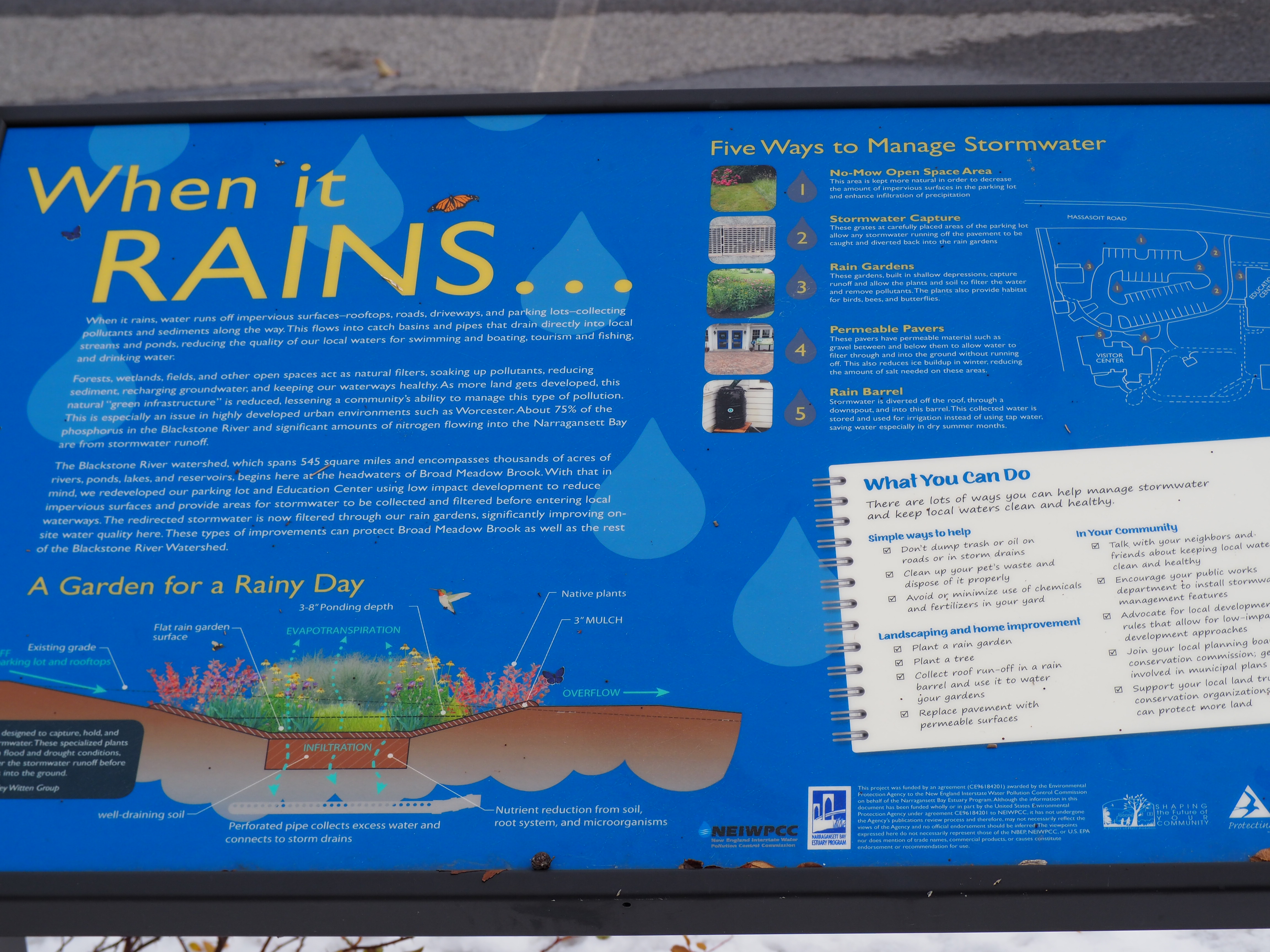
Similar to our lab on pot-ash brook, Broad Meadow Brook emphasizes the importance of runoff water and solutions such as rain gardens.
Local Bird Species
- Northern Mockingbird
- Blue Jay
- Red-Bellied Woodpecker
- Mallard (Male)
- Dark-Eyed Junco
- Hermit Thrush
- House Finch (Female)
- White-Breasted Nuthatch
- Song Sparrow
Other species: Winter wren, hairy woodpecker, downey woodpecker, red-tailed hawk, goldfinch, house sparrow, great-blue heron, American crow, and black-capped chickadees.
